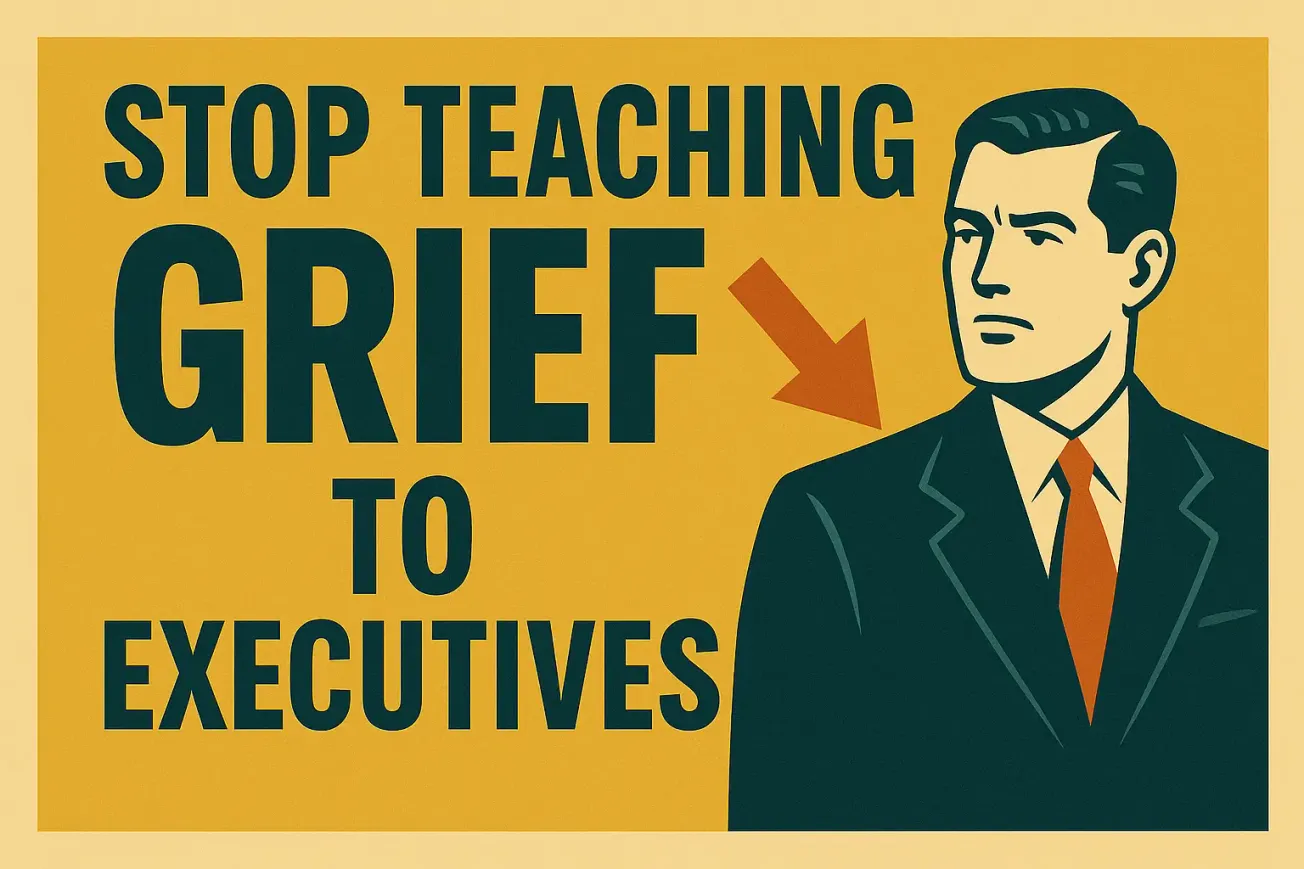When shareholder primacy collides with human sustainability
TL;DR: Organizations chase quarterly returns as if the race has no end, rewarding shareholders while those who create value see little benefit. For change practitioners, the uncomfortable question is whether we’re enabling a cycle of extraction rather than true progress.
The Relentless Clock
Every quarter, organizations reset the scoreboard. Results are tallied, narratives are shaped, and executives are measured against the singular question: What did you return to shareholders this time?
It is a cycle without pause. The clock ticks forward, resetting expectations, and pushing leaders to extract more from teams, processes, and systems—often without reinvestment in the very people who made the results possible.
For practitioners of change, this cycle is not abstract. We are often in the rooms where priorities are defined, messages crafted, and transformations designed to deliver those very quarterly returns. We know the weight of the clock because we help carry it.
The Uneven Distribution of Gains
The language of value creation suggests balance: when the company grows, everyone benefits. In practice, the returns often flow disproportionately upward. Share buybacks, dividends, and executive compensation packages signal success to markets, while the employees who drove the effort receive little beyond new pressures to “do more with less.”
Even incentives intended for broad impact—profit-sharing programs, recognition campaigns, retention bonuses—rarely match the magnitude of what is being returned elsewhere. The people closest to the value creation feel its cost most acutely but are the last to share meaningfully in its rewards.
This imbalance forces a hard question: if value is not shared equitably, can it truly be called organizational success?
Practitioners as Enablers
Here lies the dilemma for change professionals. We are hired to help organizations succeed. We design programs that align behaviors, smooth adoption, and build momentum around strategic goals. In doing so, we often help accelerate the very machine of shareholder primacy.
When we talk about “resilience,” are we honoring the workforce’s capacity to adapt—or masking the toll that endless adaptation takes?
When we say “align to business priorities,” do we mean strategy, or do we mean quarterly numbers?
When we frame transformations as opportunities, are we offering genuine growth—or cushioning the blow of decisions already made?
Our expertise in empathy and facilitation doesn’t remove us from the cycle. It may make us more effective participants in it.
The Rat Race Without a Finish Line
The drive to return value is rarely questioned within organizations. It is presented as the natural order, the measure of discipline, the proof of good stewardship. And yet, it is worth asking:
- How much is enough?
- At what point does “returning value” become “extracting value”?
- Who decides the balance between shareholder expectations and human sustainability?
The cycle has no built-in endpoint. Each quarter demands more than the last. The rat race continues because we collectively allow it to.
The Questions We Avoid
For practitioners, the tension sits at the heart of our work:
- Are we neutral advisors, serving whatever goals leadership defines?
- Are we advocates for the workforce, tasked with raising questions no one else will?
- Or are we something in between—agents navigating contradictions that cannot be cleanly resolved?
There is no single right answer. But pretending the question doesn’t exist absolves us of responsibility at the very moment our role demands reflection.
Final Thought
The pursuit of shareholder value will not slow on its own. It is a system built for acceleration. As practitioners, we are inside that system—sometimes steering, sometimes smoothing, sometimes holding on.
The question that lingers is not whether the race will continue. It will. The question is: what role are we playing in enabling it—and when will we admit the discomfort of that truth?
ChangeGuild: Power to the Practitioner™
Frequently Asked Questions
Q: Isn’t returning shareholder value the main measure of success?
A: It’s a common measure, but it overlooks the people who create that value and rarely share equally in its rewards.
Q: Where do change practitioners fit in?
A: Our work often accelerates the initiatives tied to quarterly returns. That makes us part of the system—sometimes without pausing to question what it asks of people.
Q: Why raise this issue now?
A: Because the cycle of quarterly gains shows no sign of slowing, and the pressures on employees continue to intensify. Ignoring the imbalance doesn’t make it go away.
Q: What makes this cycle difficult for organizations?
A: The demands reset every quarter, often faster than teams can recover. Over time, the gap between what’s expected and what’s sustainable widens.
Q: What are practitioners supposed to do about it?
A: The article doesn’t prescribe answers. The provocation is to recognize our role in enabling the cycle—and to ask whether that role aligns with the principles we claim to practice.
Your Move: Make it Real
- Interrogate Assumptions
Before aligning to “business priorities,” ask what’s really driving them. Is this about long-term strategy—or about hitting a quarterly number? Naming the difference matters. - Trace the Value Flow
When supporting a transformation, look at who benefits and who bears the costs. Use that lens to frame risks, impacts, and communications with leadership. - Surface the Uncomfortable Questions
In meetings and stakeholder conversations, introduce the hard questions others avoid: How sustainable is this pace? Who is being asked to absorb the most change? - Redefine Metrics of Success
Don’t just measure adoption or ROI. Add indicators of workforce health—burnout, capacity, trust. It shifts the conversation from extraction to sustainability. - Engage in Peer Dialogue
Talk with fellow practitioners about the ethical dimensions of your work. Building collective awareness is often the first step to shifting the practice. - Examine Your Own Neutrality
Reflect on moments where you stayed silent to preserve neutrality. Did that silence serve the people impacted—or just the quarterly clock? - Map Your Influence
List where in the change process you have the most leverage. Is it in shaping language, advising leaders, or sensing workforce sentiment? Knowing your influence makes it harder to dismiss your role as marginal. - Audit Your Language
Review your recent communications. How often do you use words like resilience or alignment without interrogating what they mean for the people living them? Language reveals loyalties. - Journal the Tensions
Keep a private log of situations where your role felt at odds with your values. Over time, patterns emerge that can guide where you need to push, question, or set boundaries. - Test Alternative Frames
Experiment with how you frame challenges to leaders. Instead of saying “adoption risk,” try “human sustainability risk.” Notice how it shifts the conversation—or doesn’t.
ChangeGuild exists to challenge the practice, not just to smooth the edges. If this article left you unsettled, that’s the point. Join The Guild to explore these questions with peers who are wrestling with the same tensions—and finding ways forward together.








